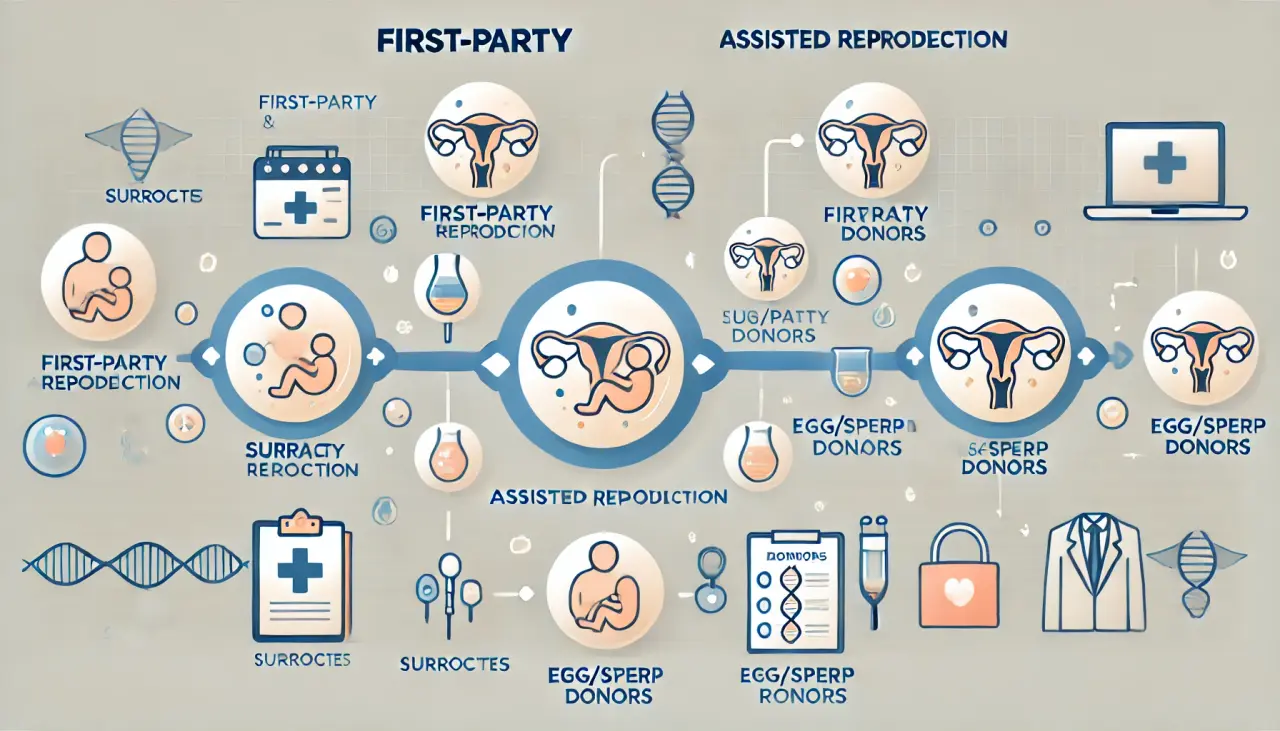
Unethical Practices in Third-Party Assisted Reproduction: Committee’s Opinion
In assisted reproductive technologies (ART) involving third parties, such as surrogates, egg/sperm donors, and legal professionals, unethical behaviors can complicate the arrangements and create significant challenges. This article discusses the ethical responsibilities of medical professionals and the role of third parties, with a focus on ensuring the welfare of all participants involved in ART.
Key Points:
- Disclosure of Information:
- If a doctor becomes aware of information that significantly impacts a third party involved in assisted reproduction (such as a lawyer, donor, surrogate, or intended parent), the doctor should encourage disclosure of this information to the affected party. In some cases, the doctor may be required to disclose important information to the affected individual or refer the patient to another institution or professional who can provide appropriate care. This is permitted both ethically and legally.
- Ethical Responsibilities:
- Doctors must balance conflicting professional duties, including the responsibility to obtain informed consent and maintain patient confidentiality. When a doctor discovers that a participant in assisted reproduction (such as a donor, surrogate, or intended parent) has breached or intends to breach significant terms of an existing contract, they should advise the party in breach to disclose their intentions or actions to the affected party.
- Role of Medical Professionals:
- If a sperm, egg, or embryo donor, or a collector of such gametes, refuses to disclose important information to intended parents, or if intended parents refuse to disclose vital details to the donors or collectors, the doctor may disclose this information to the affected party. The underlying principle for such disclosure is to prevent harm to the parties involved or to future offspring.
- Professional Boundaries:
- Doctors involved in third-party reproduction should be familiar with the key terms of agreements between all parties involved. They should refuse to participate in any activities that involve unethical or illegal behavior.
- Reporting Misconduct:
- If a healthcare professional, lawyer, or agent is found to be involved in unethical behavior in third-party assisted reproduction, the doctor should report the issue to the relevant regulatory bodies, law enforcement agencies, and/or licensing authorities.

Introduction to Third-Party Assisted Reproduction
Assisted reproductive technologies (ART) are designed to help individuals achieve parenthood by collaborating with third parties. Third-party involvement can take several forms:
- Healthcare Providers: These are the doctors and medical professionals who provide medical services to intended parents and collaborators in the reproductive process.
- Gamete Donors and Collectors: These include sperm and egg donors or the healthcare providers who collect these gametes.
- Surrogacy Agencies and Legal Professionals: Surrogacy agencies and lawyers help establish and monitor legal relationships between all parties involved in surrogacy agreements.
Types of Assisted Reproduction:
- First-Party Assisted Reproduction: This occurs when intended parents use their own gametes (sperm and eggs) for reproduction.
- Third-Party Assisted Reproduction: This involves intended parents working with gamete donors and/or surrogates.
While assisted reproduction offers privacy and security compared to natural conception, complications often arise due to the involvement of third parties, such as surrogacy agencies. Misconduct or failure to meet medical standards can lead to emotional, psychological, financial, and reputational harm.

Ethical and Legal Considerations:
- The complexity of ART arrangements, particularly with the involvement of third parties, requires a thorough understanding of the ethical and legal implications. All professionals involved must act within the bounds of medical and legal standards to avoid any harm or legal repercussions.
Original address: Misconduct in third-party assisted reproduction: a committee opinion